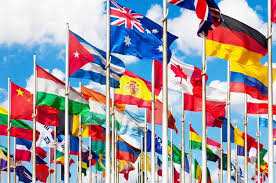The Transformative Power of Arts and Culture in Building Sustainable Cities
The pursuit of globally sustainable urban environments is paramount in our rapidly changing world. A sustainable future necessitates recognizing the crucial role of arts and culture in fostering vibrant and resilient urban ecosystems. The integration of arts and culture into urban development extends beyond aesthetic enhancement; it acts as a catalyst for economic prosperity, social equity, and environmental stewardship. This article analyzes the multifaceted contributions of arts and culture to thriving, sustainable cities, leveraging theories and models from urban planning, sociology, and economics. Key concepts explored include social capital theory, which examines the role of social networks in community building; creative industries economics, focusing on the economic impact of arts and culture; and sustainable urban design principles, emphasizing environmentally conscious urban planning.
Economic and Social Impacts: A Synergistic Relationship
The arts and culture sector functions as a powerful economic engine, as demonstrated by creative industries economics. Cultural institutions like museums and theaters attract tourists, generating significant revenue through cultural tourism and stimulating local economies. Input-output models reveal the multiplier effect of this economic activity, supporting diverse businesses and creating employment opportunities. Furthermore, social capital theory underscores the pivotal role of arts and culture in building social cohesion. Shared cultural experiences foster strong social networks, strengthening community bonds and promoting a sense of belonging among diverse populations. This contributes to place attachment, enhancing residents' connection to and investment in their communities.
Environmental Stewardship and the Cultivation of Human Capital
Integrating arts and culture into urban planning directly contributes to environmental sustainability. Sustainable urban design principles guide the implementation of public art installations that raise environmental awareness and inspire eco-conscious behavior. Moreover, cultural initiatives can transform underutilized spaces into green areas or community gardens, enhancing urban biodiversity and mitigating the carbon footprint. This aligns with the ecological footprint concept, minimizing the environmental impact of urban development. Simultaneously, arts education is vital for developing creativity, critical thinking, and problem-solving skills, reflecting constructivist learning theories. Investing in arts programs equips citizens, especially youth, with the skills needed for sustainable urban development, thereby building human capital.
Urban Revitalization, Global Connectivity, and Destination Branding
Creative placemaking initiatives, grounded in urban regeneration principles, harness the power of arts and culture to revitalize neglected urban areas. Street art projects and adaptive reuse of buildings transform communities, attracting residents and visitors, and boosting property values. Destination branding strategies, which leverage arts and culture to enhance a city's image, position cities as attractive tourist destinations, leading to significant economic benefits. Cultural diplomacy theories highlight the role of arts and culture in fostering cross-cultural understanding and international cooperation. Cultural exchanges break down barriers, promoting mutual respect and global interconnectedness.
Building Resilient, Innovative Cities for Future Generations
Arts and culture foster resilient and adaptable cities. Traditional knowledge embedded in cultural practices often provides valuable insights into sustainable resource management. Integrating these practices into urban planning enables cities to learn from the past and develop innovative strategies for a sustainable future. This aligns with the concept of adaptive capacity, strengthening a city's ability to respond to future challenges. The creative sector is a hub for social innovation, with artists and entrepreneurs generating creative solutions to environmental and social problems. Supporting this sector unlocks a wealth of innovative ideas, driving social change and contributing to the achievement of sustainable development goals. Investing in arts and culture creates a legacy for future generations, ensuring the long-term well-being and prosperity of urban communities.
Conclusion and Recommendations: A Multifaceted Approach to Sustainability
The integration of arts and culture into urban development offers significant benefits across economic, social, environmental, and global dimensions. A holistic approach, incorporating principles from various fields like urban planning, economics, and sociology, is crucial to unlock the transformative potential of arts and culture. Future research should focus on developing robust quantitative models to precisely measure the economic and social impacts of arts and culture initiatives and investigate the mechanisms through which arts-based interventions increase urban resilience. This interdisciplinary approach will refine strategies for integrating arts and culture into urban planning, fostering the creation of sustainable and vibrant cities equipped to navigate the challenges of the 21st century. Policymakers should prioritize funding for arts and culture programs, recognizing their vital role in sustainable urban development and community well-being. Furthermore, fostering collaborative partnerships between artists, urban planners, and community stakeholders is essential to ensure equitable access and meaningful community participation in shaping the cultural landscape of their cities. The long-term impact of these strategies will contribute to the development of more livable, equitable, and environmentally responsible urban environments globally.
Reader Pool: How can cities effectively leverage the principles of adaptive management to ensure the long-term sustainability and resilience of their arts and culture initiatives, considering the dynamic nature of social, economic, and environmental factors?





No comments yet. Be the first to share your thoughts!